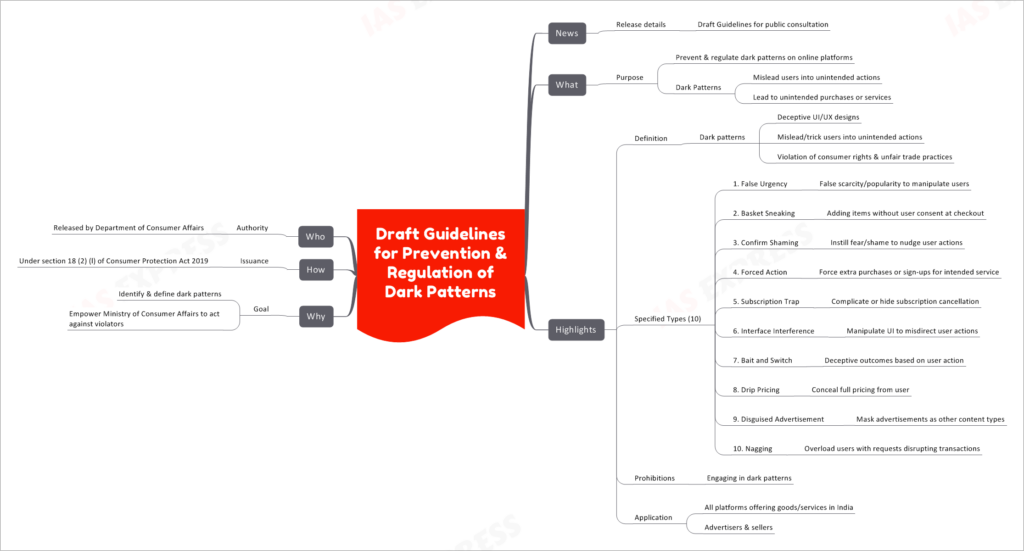Draft Guidelines for Prevention and Regulation of Dark Patterns

The Department of Consumer Affairs has unveiled the Draft Guidelines for the Prevention and Regulation of Dark Patterns for public consultation. This move seeks to enhance the online experience for users and protect them from manipulative designs that might lead to unintended actions.
This topic of “Draft Guidelines for Prevention and Regulation of Dark Patterns” is important from the perspective of the UPSC IAS Examination, which falls under General Studies Portion.
What Are Dark Patterns?
Dark patterns can be best described as deceptive UI/UX designs that mislead or trick users into taking unintended actions. Such deceptive maneuvers often lead to unintended purchases, subscriptions, or other services. They not only violate consumer rights but are also indicative of unfair trade practices.
Key Highlights of the Guidelines
Defined Dark Patterns
The guidelines have meticulously defined dark patterns as manipulative design tactics, including:
- False Urgency: Creating a fake sense of scarcity or popularity to influence user actions.
- Basket Sneaking: Deceptively adding items to a user’s checkout without their consent.
- Confirm Shaming: Using fear or shame to sway a user’s actions.
- Forced Action: Compelling users to make extra purchases or sign up for additional services to access the primary intended service.
- Subscription Trap: Making the process of subscription cancellation convoluted or hidden.
- Interface Interference: Deliberately designing the user interface to misdirect or confuse users.
- Bait and Switch: Leading users to unexpected outcomes based on their initial actions.
- Drip Pricing: Not revealing the full price upfront.
- Disguised Advertisement: Presenting ads in a manner that makes them appear as regular content.
- Nagging: Continuously bombarding users with repetitive requests or information, disrupting their primary task.
Strict Prohibitions
The guidelines strictly prohibit platforms from engaging in or promoting dark patterns.
Broad Application
These guidelines are applicable to all online platforms that offer goods or services within the Indian domain. This includes, but is not limited to, online retailers, service providers, advertisers, and sellers.
Objective & Legal Standing
The primary aim of these guidelines is twofold:
- Identify and Define: Clearly define what constitutes a dark pattern.
- Regulation: Provide the Ministry of Consumer Affairs with the necessary authority to take action against those indulging in such practices.
The issuance of these guidelines finds its legal foundation under section 18 (2) (l) of the Consumer Protection Act of 2019.

